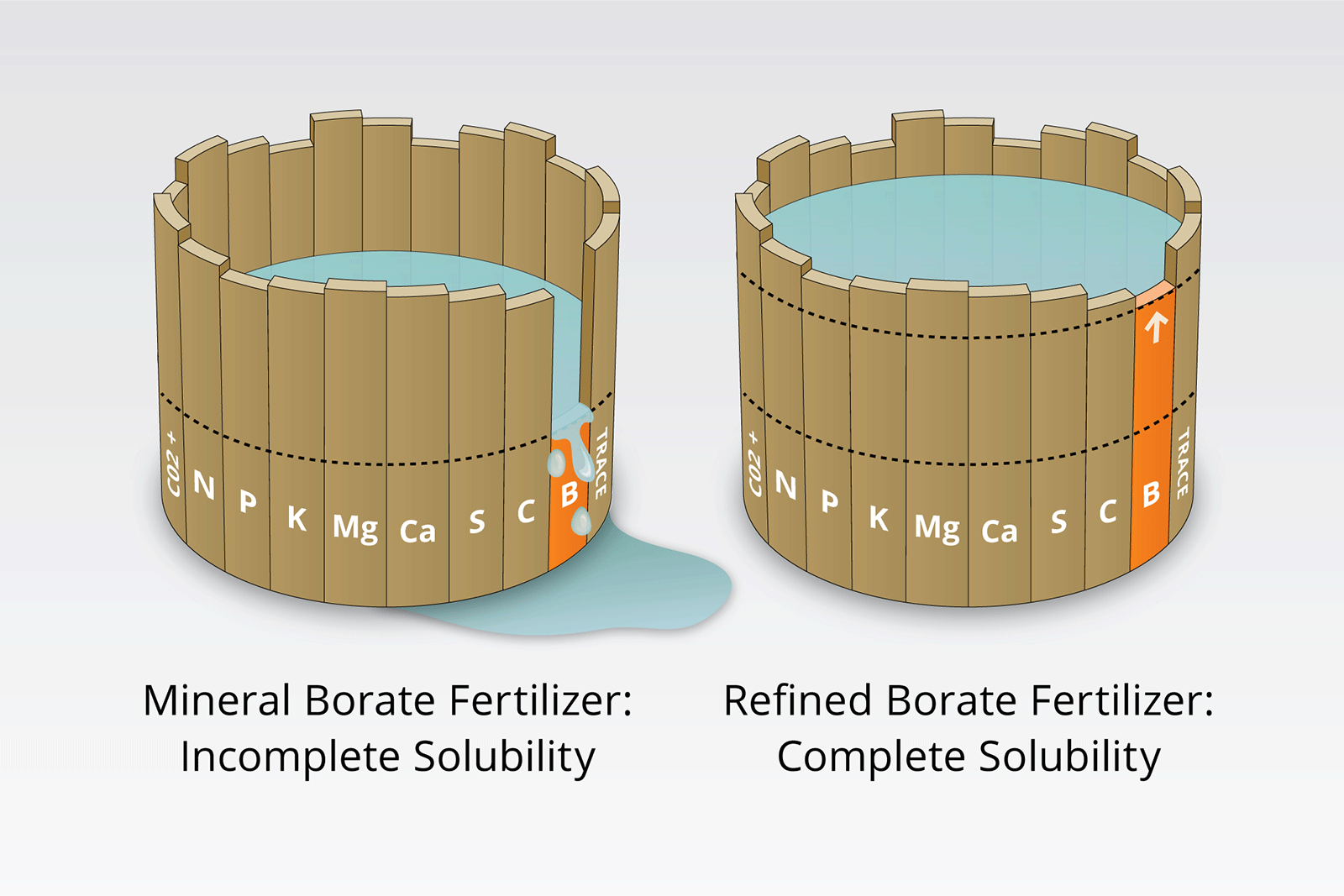There are dozens, if not hundreds, of products to choose from as you’re planning your fertilization program. From various blends of granular and powder to liquid formulations, there are numerous nutrient variables. How can you cut through the clutter to find out what you really need?
Think of soil like your refrigerator: You need to stock it with essential items to stay healthy. And, you need to restock your fridge regularly.
Building blocks for plant life
Like humans, plants have basic needs to get to optimal yield. Crops require a steady supply of macronutrients and micronutrients. The difference between the two is quite simple: Macronutrients are required in larger quantities than micronutrients.
The names of the two categories don’t imply that one type of nutrient is more important than another; it just means that more macronutrients must be present in the soil than micronutrients. Plants obtain nearly all of the nutrients they need from the soil, although some are obtained via photosynthesis.
Cover the basics with macro doses
Macronutrients are divided into two groups: Primary and secondary. We’re well-familiar with the primary macronutrients needed in the highest concentration: Nitrogen (N), phosphorus (P), and potassium (K)—the NPK blend. These three primary nutrients are necessary in higher concentrations than the rest of the macronutrients combined.
Secondary macronutrients are also required for sustained plant health, but in lower quantities. These are calcium (Ca), magnesium (Mg), and sulfur (S).
Micronutrients for increased yield and health
Micronutrients are essential to plant development and growth but are needed only in trace amounts, compared to their macro-counterparts. The seven critical micronutrients are:
- Boron (B)
- Zinc (Zn)
- Iron (Fe)
- Manganese (Mn)
- Copper (Cu)
- Molybdenum (Mo)
- Chlorine (Cl)
The Law of the Minimum
The importance of micronutrients can best be explained by analogy. Consider barrels like the ones pictured here:

In a barrel, every plank (or “stave”) is 100% necessary and needed to retain the contents of the barrel. Like each part of a barrel, every micronutrient is 100% necessary for healthy plant growth.
However, notice that in the left barrel, the stave labeled “boron” is shorter than the rest. A real barrel can only be filled up to the top of the shortest stave before its contents begin spilling out. The same can be said for plants; the least-available nutrient (ie shortest stave) determines how well a plant can absorb and use all other nutrients. The plant is unable to use any nutrient that is added above that minimum level, so any extra nutrients are wasted. That minimum limits how well the plant grows and develops, ultimately impacting overall crop yield. This is known as the Law of the Minimum.
Restocking with healthy options
As you can see, plants require a steady supply of both macro- and micronutrients to stay healthy and produce optimal output. A lack of any one of these nutrients can significantly impact the health and longevity of a plant. Natural deficiencies in soil can be supplemented by using the proper applications and techniques to ensure proper development.
However, just as you should stock your refrigerator with heathy foods, you should also replenish your soil with high-quality products. The availability of boron affects crop yield and plant development.
In the barrel on the left, the soil is given an unrefined mineral borate fertilizer, which is not optimally water soluble. That means that the plants in this soil will not get as much boron as they need to be healthy and viable. The barrel on the right illustrates plant viability when refined borate fertilizer is applied to the soil. The high-water solubility of the refined product means that more boron can be available to the plant during the course of the growing cycle, ensuring proper development and yield.
Like people, when plants get good nutrition, they can be at their best—and give farmers the best possible yield in return. So, as you plan your fertilizer program, make sure you have soil test results handy so you know what macro- AND micronutrients your crops need. Ask your local U.S. Borax representative if you have questions about adding boron to your fertilizer mix.
Resources